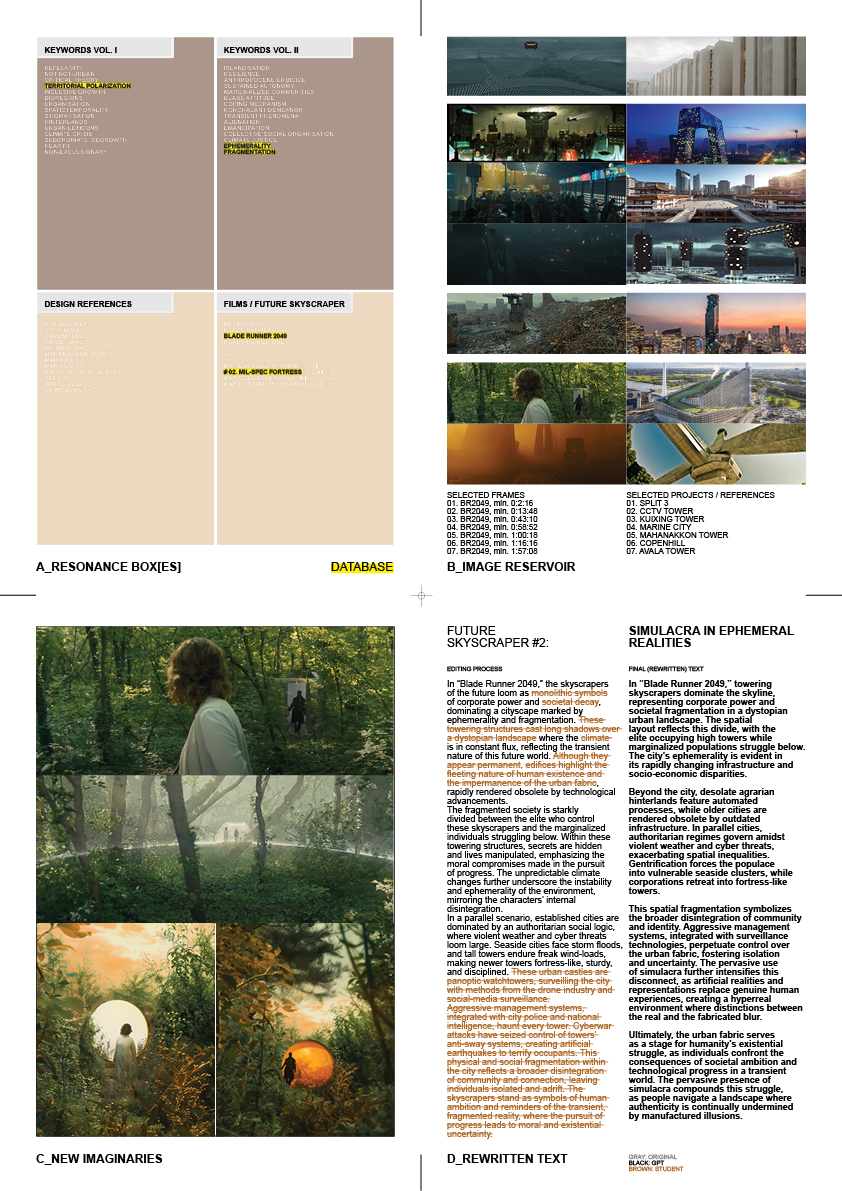In this project we focused on analysing how future skyscrapers could look like and comparing that with the urban imaginary of the film ‘Blade Runner 2049’.
In “Blade Runner 2049,” the skyscrapers of the future loom like monolithic symbols of corporate power and societal decay. Their towering structures cast shadows over the dystopian landscape, reflecting the cold, impersonal nature of the world they inhabit. Within these towering edifices, secrets are hidden and lives are manipulated, serving as both symbols of human ambition and reminders of the moral compromises made in the pursuit of progress.
Sterling, B (2015) imagined four fictious scenarios of how future skyscrapers might be, differentially equalizing the state of technology, and the economical-political climate:
- Future skyscraper #1: Huge, lopsided pyramid
- Future skyscraper #2: No-nonsense, mil-spec fortress
- Future skyscraper #3: Colossal, awkward tower
- Future skyscraper #4: Postindustrial, digitized monster
We choose scenario 2 to compare this massive urban structures with the movie mentioned above.
IMAGE

FINAL TEXT
In “Blade Runner 2049,” towering skyscrapers dominate the skyline, representing corporate power and societal fragmentation in a dystopian urban landscape. The spatial layout reflects this divide, with the elite occupying high towers while marginalized populations struggle below. The city’s ephemerality is evident in its rapidly changing infrastructure and socio-economic disparities.
Beyond the city, desolate agrarian hinterlands feature automated processes, while older cities are rendered obsolete by outdated infrastructure. In parallel cities, authoritarian regimes govern amidst violent weather and cyber threats, exacerbating spatial inequalities. Gentrification forces the populace into vulnerable seaside clusters, while corporations retreat into fortress-like towers.
This spatial fragmentation symbolizes the broader disintegration of community and identity. Aggressive management systems, integrated with surveillance technologies, perpetuate control over the urban fabric, fostering isolation and uncertainty. The pervasive use of simulacra further intensifies this disconnect, as artificial realities and representations replace genuine human experiences, creating a hyperreal environment where distinctions between the real and the fabricated blur.
Ultimately, the urban fabric serves as a stage for humanity’s existential struggle, as individuals confront the consequences of societal ambition and technological progress in a transient world. The pervasive presence of simulacra compounds this struggle, as people navigate a landscape where authenticity is continually undermined by manufactured illusions.


